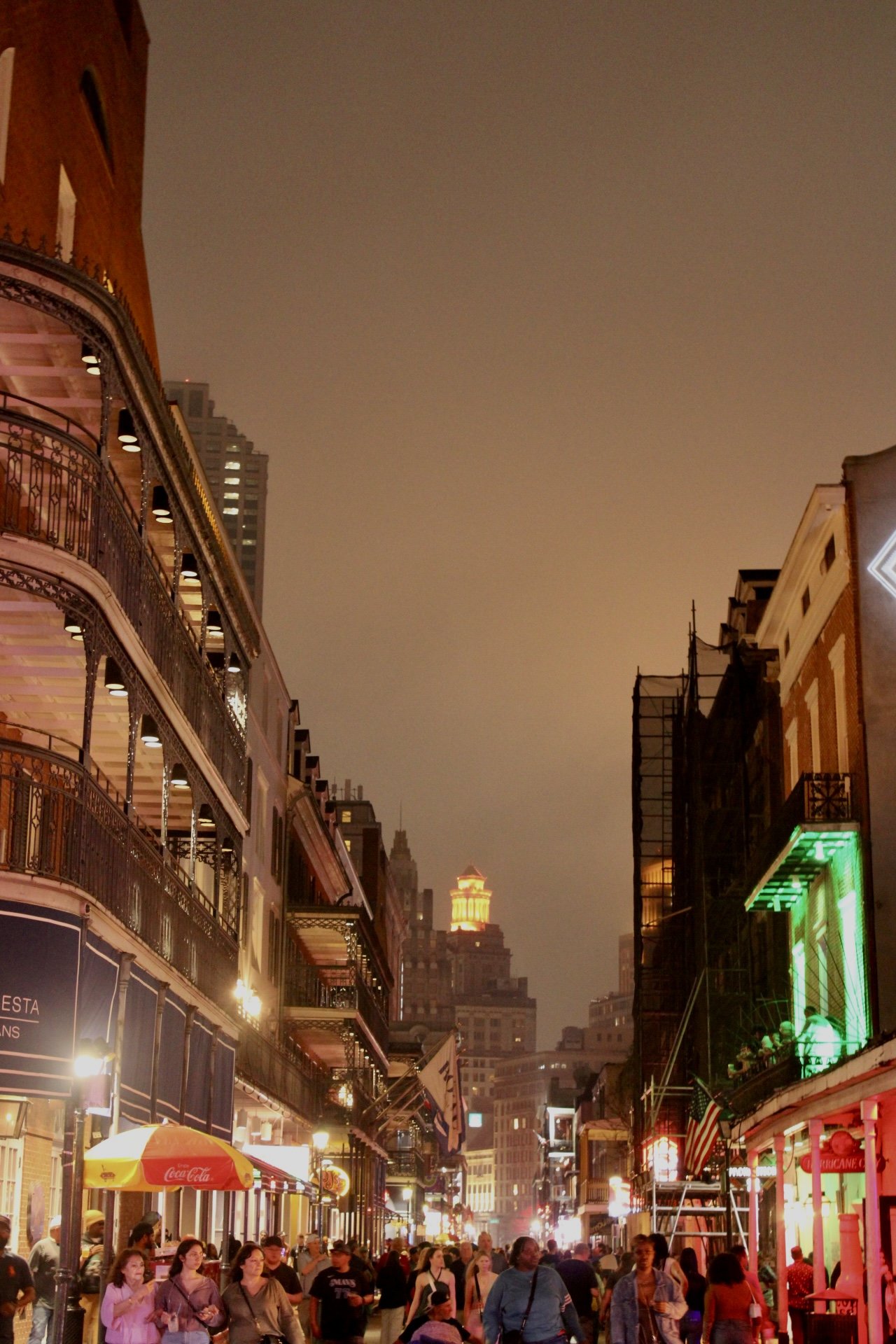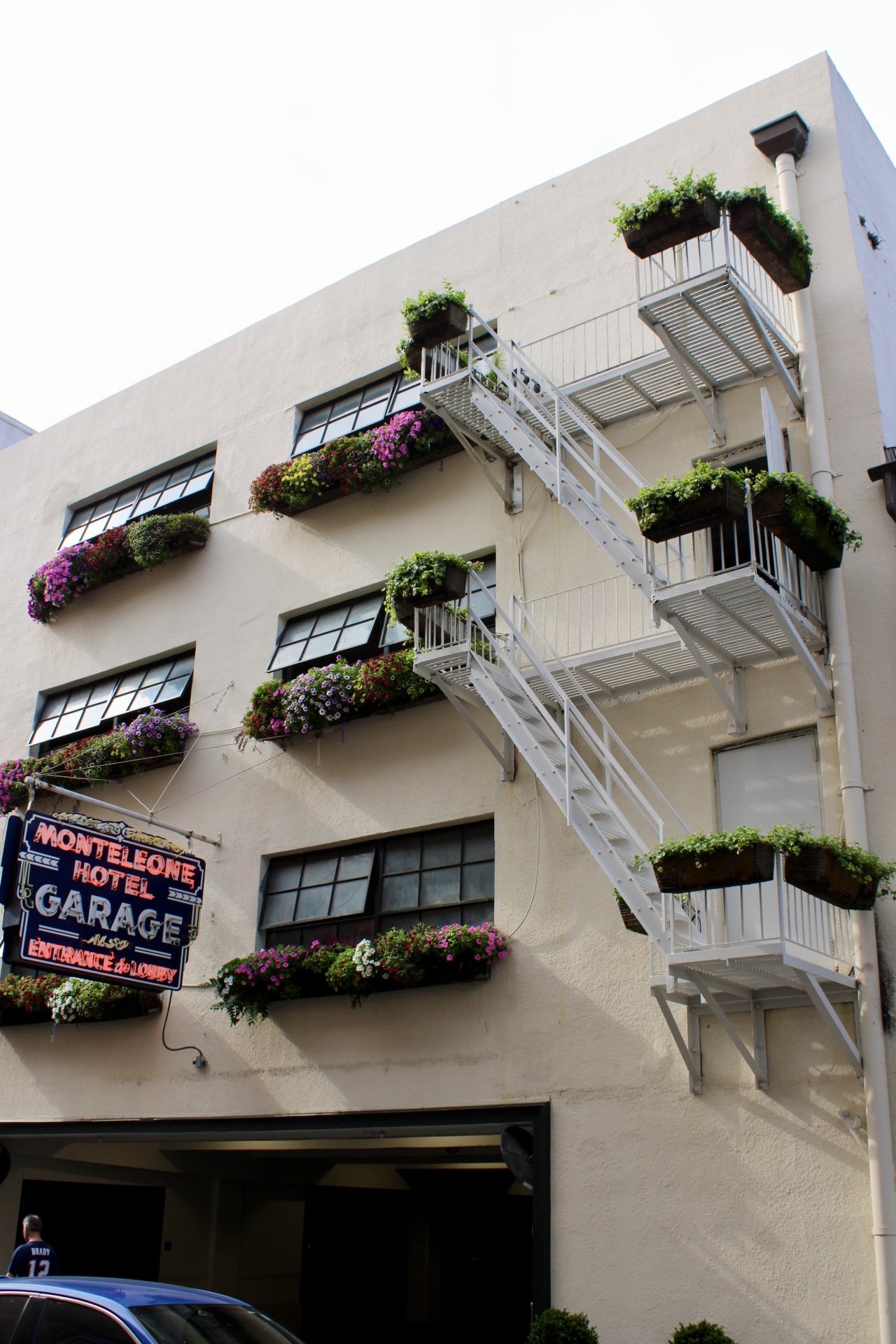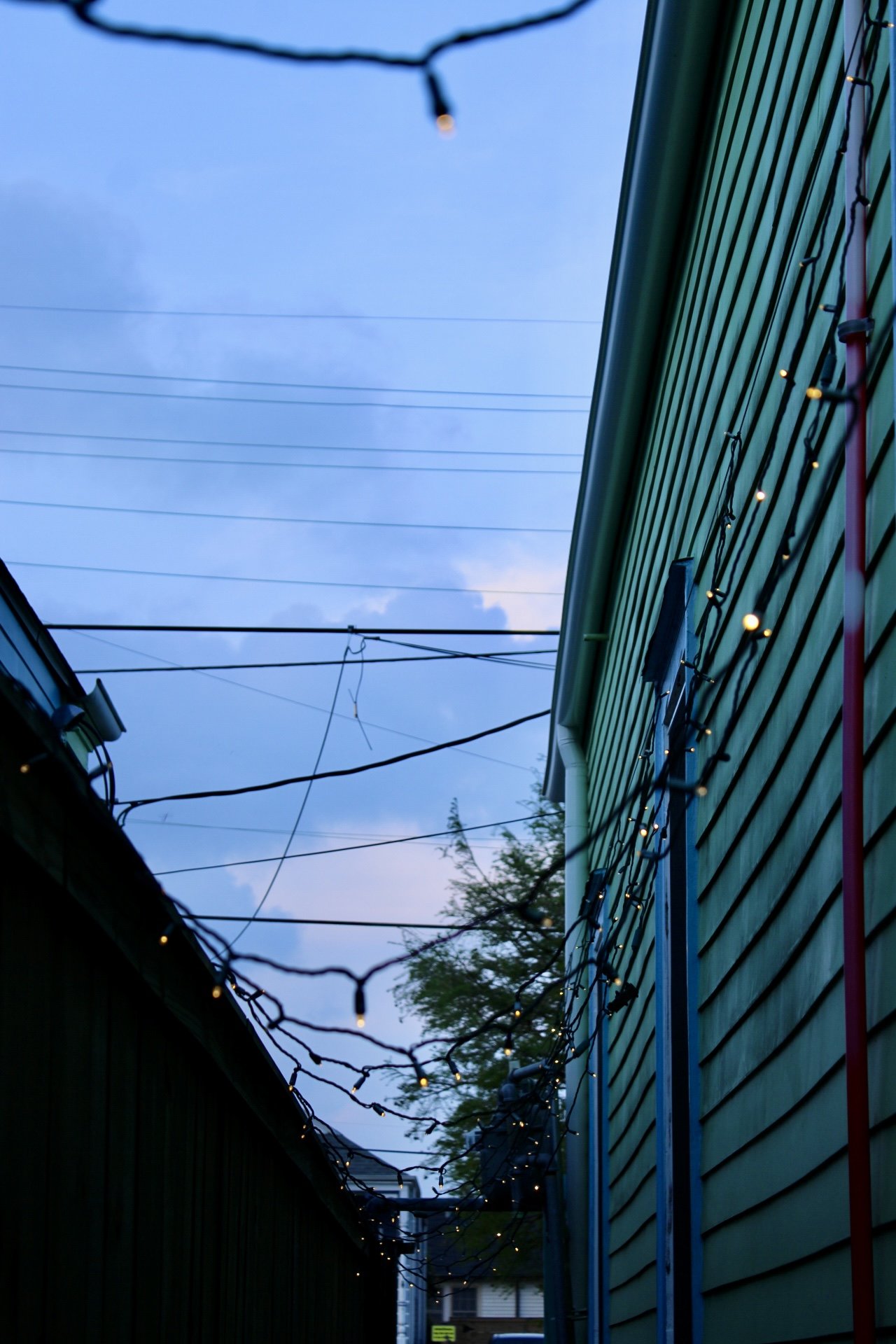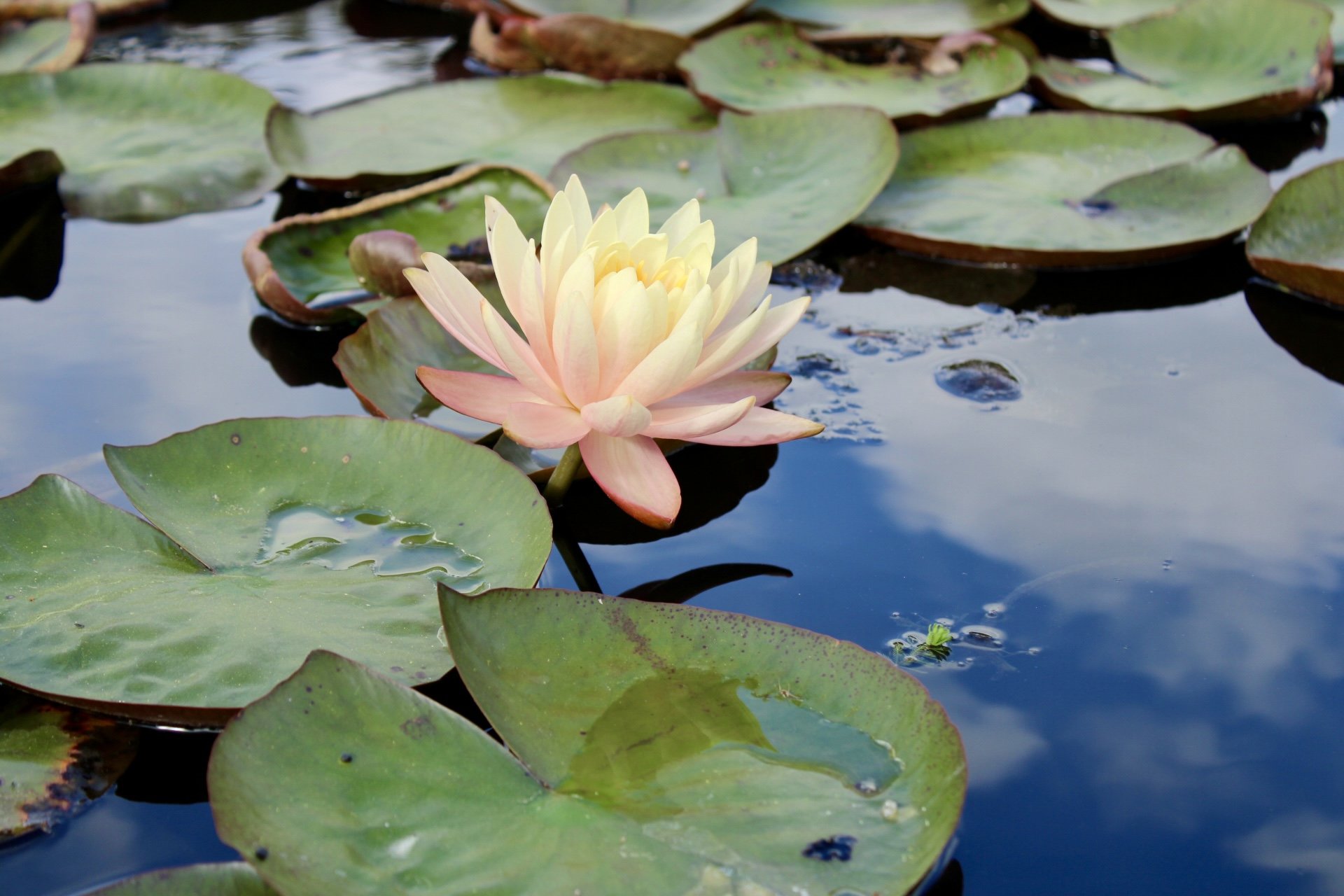An Endless String of Colorful, Dancing Beads
I’d like to think I’m a knowledgeable person. Yet, it’s always comforting and humbling when I visit new places and expose myself to so much more than I could ever learn in a classroom or through an electronic screen.
When my roommate and I visited New Orleans, Louisiana, for spring break, all I could see myself doing was listening to great jazz music and admiring the colorful architecture.
As our trip drew closer and the more research I did, I realized it was a place of rich history. However, I didn’t foresee how frequently I would find myself thinking about the issues in my home state, Texas, and how heavily I would relate to the multicultural identities and cultures present in the New Orleans population.
A Blend of African, French & Spanish Stories
We dedicated our first day-excursion to discovering what the French Quarter was all about. It’s essentially the main tourist destination and the most walkable area in New Orleans.
Immediately, I was taken aback by the strong architectural and cultural presence of the French and Spanish. From the Spanish street plaque names still being intact to the European-style walkable streets, and the Spanish, French and African house styles, I was absolutely amazed with the rich blend of cultures.
My funniest observation, though, was the public transportation app literally being called “Le Pass,” meaning “The Pass” in French, which people use to access the buses, streetcars and ferries.
It made sense, though. France claimed New Orleans, along with the massive land area of Louisiana, in 1718 to control the Mississippi River. But from 1763 to 1803, Spain gained control of New Orleans as France needed to pay off one of its many war debts. The United States purchased the Louisiana area from France in 1803, solidifying its place in American history.
As someone who is of Mexican (Indigenous) and Spanish ancestry, it was quite fascinating to discover this blend of cultures present as a result of colonization — a reason many of us are here today. This thought was present throughout my trip, partly because it kept coming up everywhere I looked.
In New Orleans, there’s a huge history of voodoo practices as a result of the African slave trade. When the Spanish came to New Orleans with Roman Catholicism beliefs, the African population did not simply convert. Instead, they created the practice of Voodoo-Catholicism.
If you ever visit, you will surely hear the name of the late Marie Laveau, a Louisiana Creole and leading Voodoo-Catholicism practitioner.
She is idolized in the greater New Orleans community, and you can even visit her home and grave. We visited places like the Historic Voodoo Museum, Voodoo Authentica and the Esoterica Occult Goods to learn more.
This mix of cultures reminded me of the Indigenous communities in Mexico that did not succumb to the religious practices of the Spanish. Instead, a blend of their beliefs and the Spanish’s emerged into the Catholicism practiced today in Mexico. Their cultures, just as those of the African people in New Orleans, were not erased but merely blended, and those identities continue to persevere to this day.
It was surreal to gather outside the popular St. Louis Cathedral in Jackson Square, both designed by the Spanish. Even down to the cemeteries, the two famous and oldest being the St. Louis Cemetery (1789) and Lafayette’s Cemetery (1833), the Spanish influence is highly present. These are often called “Cities of the Dead” as they store millions of above-ground tombs. The reason: New Orleans is a swamp and if you put a casket in the soil, it will become drenched with water and float, creating a not-so-nice odor.
If I were your average tourist, I would recommend visiting Café du Monde to try the famous beignets. Alas, I am not, and instead instruct you to visit Meals from the Heart in the French Quarter’s Farmer’s Market to try their vegan beignets (which taste identical to a regular beignet, and you don’t wait in line for hours).
The Reality of War, Nature & College Student Dilemmas
As a history buff, I had to visit the National WWII Museum in the Central Business District. And you might be wondering, why is this museum located in New Orleans, out of all places? It’s because, according to the museum, “New Orleans is home to the [landing craft, vehicle, personnel] or Higgins boat, the landing craft that brought U.S. soldiers to shore in every major amphibious assault of World War II.” In other words, the boat used to propel off the massacring of millions of people was created in New Orleans and was part of the reason we won the war.
And to my dismay, this museum has to be one of the most disappointing showcases of “history” I have ever seen (and I’ve been to A LOT of museums). For one, it was very depressing, which is to be noted as it’s a war museum, but more so because it rarely highlighted the mass genocide and damage caused.
Instead, the entire museum placed the United States on a pedestal and was essentially a bunch of propaganda for how we should “honor” the greatness of the country.
In great contrast: our afternoon adventure. We visited the New Orleans City Park where the New Orleans Botanical Garden and New Orleans Museum of Art are located. This was the most spectacular location of the entire trip! If it wasn’t for the closing time, I would’ve stayed there forever — it is a MUST-SEE.
Wandering in and about the gardens, I found myself contemplating my life after college, wondering where I truly wanted to go. I was accepting my fear that I didn’t have all the answers, while the tranquil and vast green landscape comforted me. I remember it was so quiet, I could have lost myself in the sea of my own thoughts.
On another day, we kayaked the Manchac Swamp, one of the most haunted places in Louisiana (which we did not know at the time). I grew up in Houston, another swamp, always smelling the murky brown water of the Buffalo Bayou, so New Orleans was anything but new to me.
However, our guide took us past the main water and into less human-interfered water. We saw more than five (more than I was comfortable with) alligators, babies and adults, for the first time. Our guides told us they are afraid of humans, and that calmed me down a bit.
Not long into kayaking, my phone (along with my debit and credit card and student and state ID) slipped from my waist pocket. For a greater part of a week after the trip, I was still suffering from shock, not to mention, the hassle and difficulty of recovering everything I had lost. I also, sadly, said goodbye to all the pictures of my life because my phone couldn’t be recovered.
Adding to my fear shortly after was our boat becoming stuck in place as an underwater tree trunk had trapped us. This was terrifying, more so because our guide and kayak group disappeared, leaving us alone to navigate the dense landscape.
Now, knowing it’s haunted, I can’t help but think the ghosts were highly present that day!
On the last days of our trip, we visited the Oak Alley Plantation and the Whitney Plantation, located far west of New Orleans. They mainly operated as sugar plantations in the 19th and 20th centuries, totaling the enslavement of 480 people. We learned the role these wealthy plantations played in controlling the political narrative of the elite whites.
The most beautiful part of our visit was seeing the 28 oak trees in a row (hence why people call it Oak Alley) that could very well be 200-to-250 years old. This experience was once again a reminder that human history is uncomfortable but necessary to be saved and shared.
The African identity was central to the creation of the jazz genre in the 19th and 20th centuries. It would be a disservice to not highlight one of the most iconic parts of visiting New Orleans.
To get into the music scene, head to the Marigny and Bywater area, going up the Mississippi River above the French Quarter, also known as the “hipster neighborhood.” I highly recommend visiting the Spotted Cat Music Club and Favela Chic!
I can’t forget about the exquisite New Orleans cuisine! So, please visit the following:
Surrey’s Café & Juice Bar for some wholesome, summer vibes
Daisy Dukes Chartres if you want a comforting Southern breakfast
Gazebo Café for the great live music and the best daiquiris (I recommend the banana split with rum)
Rosalita’s Backyard Tacos if you’re homesick for Mexican food like I was (I recommend the watermelon lemonade with the cheese enchiladas that are so flavorful and crispy)
Willie’s Chicken Shack for when you’re on Bourbon Street (also known as: the 6th St. of New Orleans) and are in the mood for a past-midnight snack
A Nation Clouded in Division, Yet We Are All One With the Soil
I’ve always struggled to know who I am.
Now, as a third-year journalism and Latin American studies student, I can proudly say my time at the University of Texas at Austin exemplifies how I’m becoming the truest and most authentic version of myself.
My adventure across New Orleans (along with last year’s spring break trip to Mexico City) are examples of me incorporating my identity and studies into the trips I make. I will bring these stories of hardship and survival as I go on to become a foreign correspondent based in Latin America.
I encourage everyone to form those experiences if you can. Everywhere you go is an extension of who you are, where you come from, and who you could be. It’s an understatement to say exposing oneself to different cultures, history and people is so vital to realizing how we’re not all that different.
Returning to Texas and continuing to witness the devastating aftermath of the Texas Senate Bill 17 is such a tragedy. It’s a perpetuated repetition of history where for so long the voices outside the non-white elite continue to be silenced and the identities of people of color are attempted to be stripped from existence.
Since approval in April 2023, it has restricted how the state’s public universities can promote equitable access to higher education and cultivate diversity among students, faculty and staff. More recently, it has prompted universities all over Texas to close or restructure their diversity, equity and inclusion offices. This occurred closer to home with the termination of the University’s Multicultural Engagement Center and the Division of Diversity and Community Engagement.
It’s extremely frustrating to witness the act of inclusion being referred to as a crime. These programs wouldn’t have been created if all these injustices and inequality were nonexistent. Once again, people are being punished for being different, whether it’s the color of their skin, their sexuality, the languages they speak, culture, or even their nationality.
Whether here in Texas, in the bustling streets of New Orleans, or in Mesoamerica where Spanish colonizers attempted to destroy the legacy of my ancestors simply because they didn’t bother to understand them, the same story prevails
At the end of the day, we’re all beads on the same string.
As said by Maya Angelou:
“Perhaps travel cannot prevent, but by demonstrating that all people cry, laugh, eat, worry, and die, it can introduce the idea that if we try and understand each other, we may even become friends.”
Photography by Nadely Requena













